What matters? As a culture what objects should we, as Americans, care about enough to protect? What should be recognized as a defining element of our culture’s evolution worthy of recognition and preservation? In 1966 by an act of Congress, the Federal Government established the National Register of Historic Places. This act authorized creation of an official list of historic places in America worthy of documentation and preservation. Today, the list includes almost 100,000 properties comprised of buildings, sites, districts, structures, and objects, but no automobiles.
No automobiles!!! What single object has played a greater role in the evolution of American culture than the automobile?
This glaring oversight received remedy in 2013 with creation of the National Historic Vehicle Register (NHVR)through the collaboration of the U.S. Department of Interior, the Heritage Documentation Programs, the Library of Congress and the Historic Vehicle Association (Recently renamed the Hagerty Drivers Foundation, HDF). Tasked with the recognition and documentation of the most historically significant automobiles, motorcycles, trucks and commercial vehicles in America’s past, the NHVR faces a daunting task. As of today 32 vehicles have been honored with recognition.
Let’s take a look at what makes them so special.
Judged the 32 most historically significant cars in America. Do you agree?

How to pick the vehicles that matter most? Right off the bat inclusion does not necessarily require the vehicle to be the best of its breed.
NHVR has established four defining criteria that affords eligibility to the register. A vehicle only has to meet one of the criteria to be considered eligible for entry.
Criteria
1.The vehicle must be associated with a meaningful trend in American automotive history or culture or a significant event or events.
2. The vehicle is associated with the life or lives of a person or persons who played a significant role in American history or culture.
3. The vehicle must achieve distinction based on design, engineering, craftsmanship or aesthetic value.
4. A vehicle of a particular type that was the first one produced, the last one produced, is a rare or the sole example or is among the most well-preserved or authentically restored surviving examples.
These four criteria go a long way in making sense of what could otherwise be a list possessing considerable mystery. It certainly can provide clarity in explaining why your pristine 1967 427 Corvette is doubtful to make the cut but a 1964½ Mustang coupe with a straight six, automatic transmission and the lowest VIN# known would seem to be a lock.
Diane Parker, Vice President of the Historic Vehicle Association, speaking in 2019 said, “The National Historic Vehicle Register was created to fill a gap in our history. As you can imagine, we have a little bit of catching up to do,” Parker said. “There are over 2500 makes of vehicles out there, but we’re going to do this one vehicle at a time. For us, the National Historic Vehicle Register isn’t our mission, it’s our passion—it’s our purpose.”
Once selected, a chosen vehicle experiences a breathtaking level of documentation to assure that every attribute will be available to scrutinize for future generations.
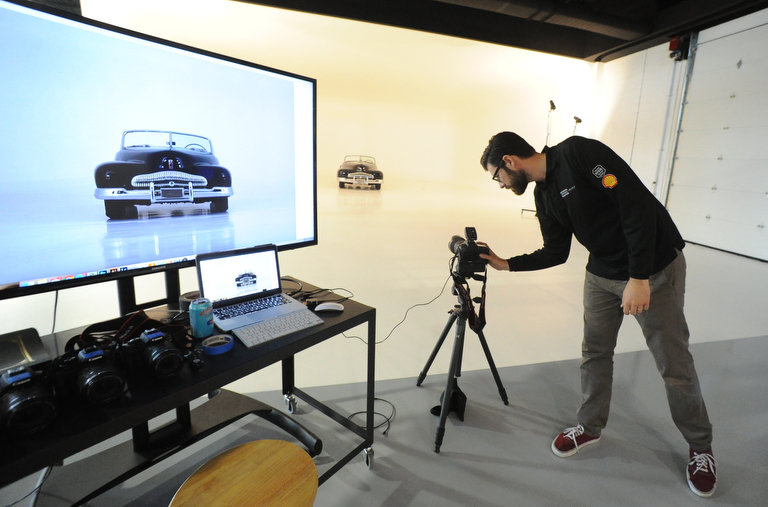
A significant benefit to that goal resulted from an extraordinary act of selfless generosity in support of the NHVR that would save countless hours and dollars.
Documentation demands a venue affording an extraordinary level of technical sophistication and cleanliness in a spacious environment. At the outset, documenting the first few cars demanded finding a warehouse or studio near the subject vehicle to which all necessary equipment had to be transported. Realize that meant transporting and setting up all the equipment to conduct the photography, photogrammetry (the science of obtaining reliable information about physical objects by recording, measuring, and interpreting using noncontact sensor systems), 3D scanning and videography. Needless to say the need for such mobility posed an arduous and expensive task.
Now comes the generosity. When hearing of this logistical nightmare Nikola Bulgari, founder of the NB Center for American Automotive Heritage in Allentown, PA, simply said, “Do it here at the N-B Center. We will build a permanent studio with the all the technology hardwired in and positioned.” From then on it was game on.
As of today these 32 Vehicles have been selected for inclusion in the NHVR list. Do you agree?
1964 Shelby Cobra Daytona Coupe
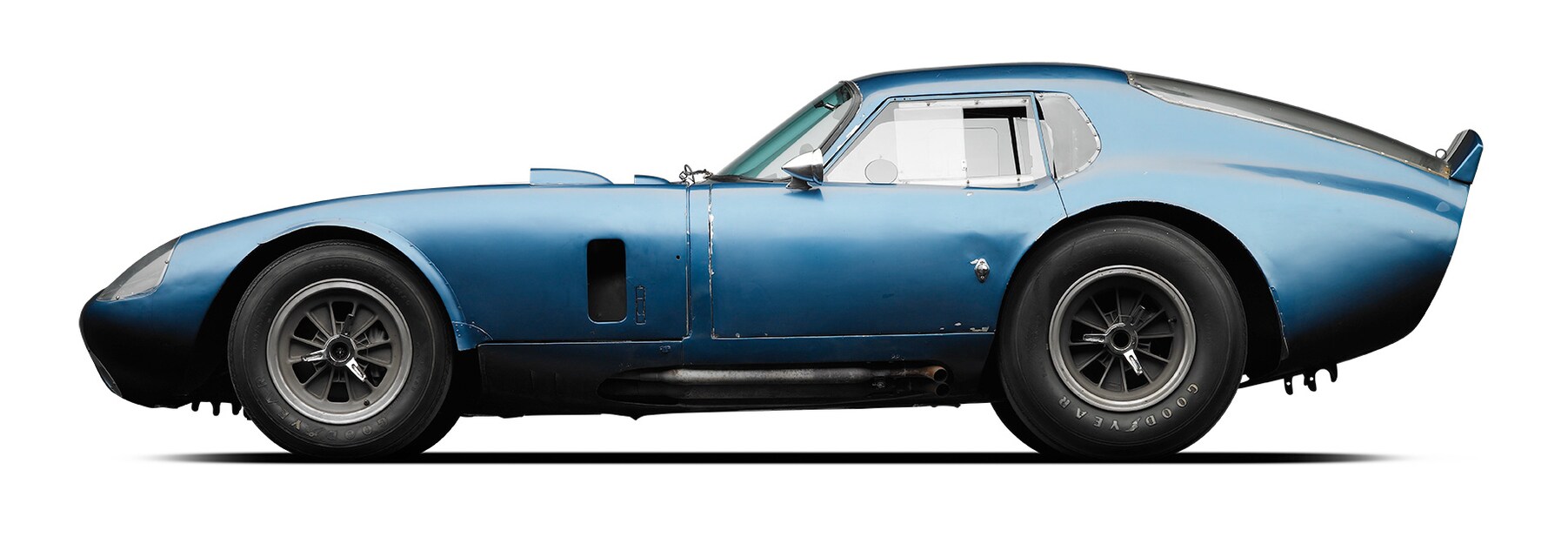 The initial entry to the NHVR, the Daytona Coupe touched every base for criteria meriting selection . Created by Carroll Shelby, designed by Peter Brock, this, the first Daytona Coupe, powered by a 289 cu. in. Ford V8 delivering 375 horsepower was capable of speeds over 180 mph. Known as the CSX2287, it stands tall in the pantheon of most significant American vehicles in history. In 1965 in winning an FIA-sanctioned international series, this Daytona Coupe made a major mark in US automotive history.
The initial entry to the NHVR, the Daytona Coupe touched every base for criteria meriting selection . Created by Carroll Shelby, designed by Peter Brock, this, the first Daytona Coupe, powered by a 289 cu. in. Ford V8 delivering 375 horsepower was capable of speeds over 180 mph. Known as the CSX2287, it stands tall in the pantheon of most significant American vehicles in history. In 1965 in winning an FIA-sanctioned international series, this Daytona Coupe made a major mark in US automotive history.
 1964 Meyers Manx “Old Red”
1964 Meyers Manx “Old Red”
Built by legend Bruce Meyers, “Old Red” was the first fiberglass dune buggy and the prototype rear-engine VW powered Meyers Manx that inspired the dune buggy craze. While Meyers built roughly 7000 Meyers Manx dune buggies it inspired over 250,000 copies making it the most replicated car in history.
1938 Maserati 8CTF “Boyle Special”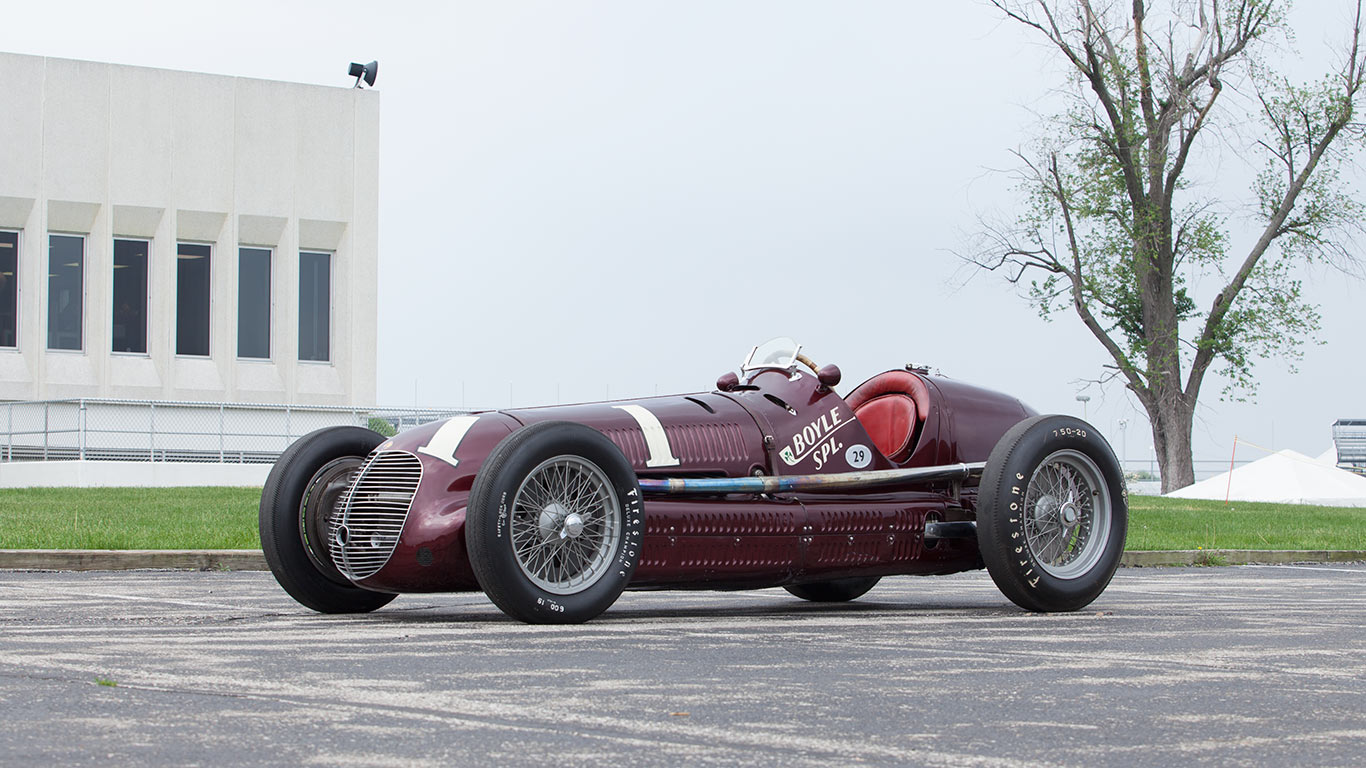
The most successful car to ever compete at the Indianapolis 500 race, the Boyle Special with its two wins, two third places, and one fourth place in a racing career that spanned the late 1930s to 1953 established its exalted place in American racing lore.
1918 Cadillac Type 57
The only remaining passenger car that served in WWI in France. Steeped in historic value and wartime service this 1918 Cadillac saw extensive use across war-torn battlefields of Europe while driven in support of The American Expeditionary Force by its owner and YMCA volunteer Rev. John Hopkins Dennison.
1947 Tucker 48 Prototype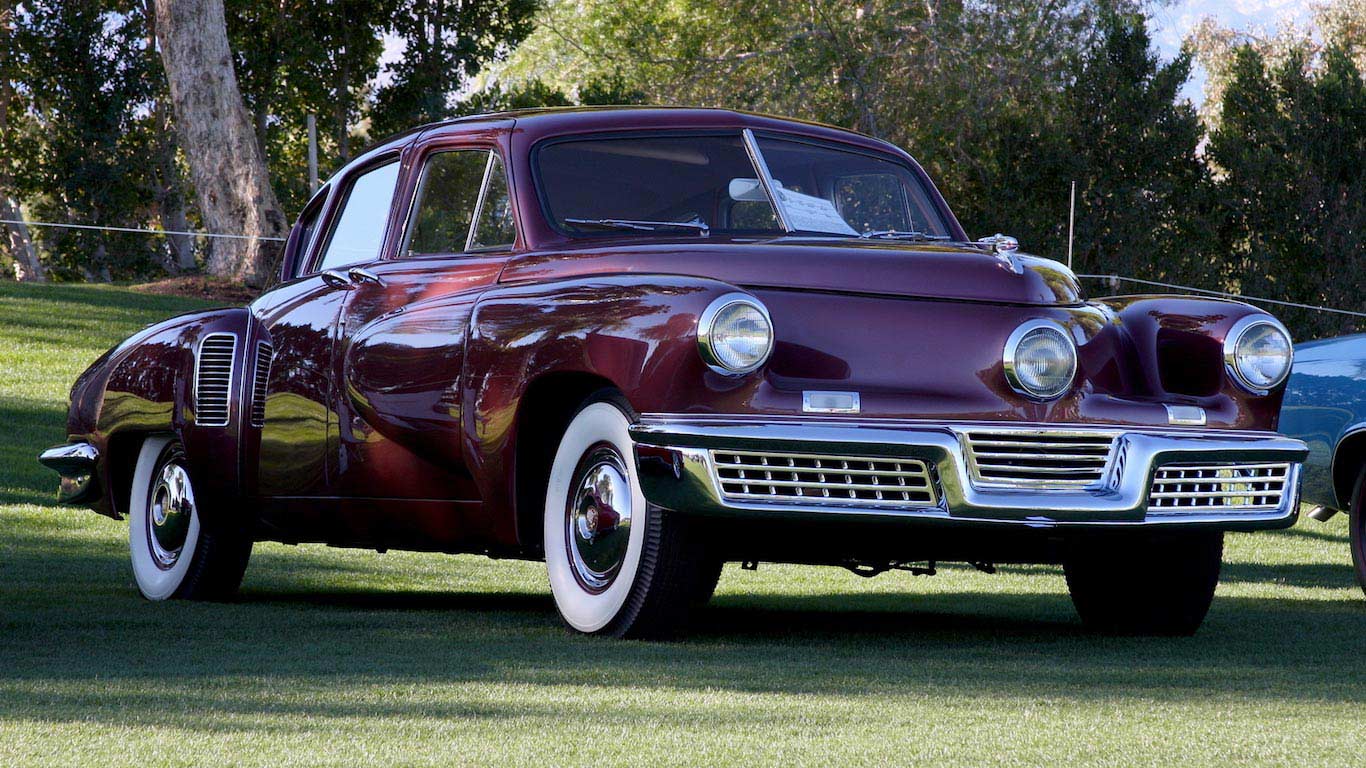
Created by Preston Tucker, the Tucker, certainly holds a brief but outstanding place in American automotive history and design. Though only 51 cars would be produced, the Tucker’s impact on the automobile industry, automobile innovation and automobile lore far exceeded its limited life.
1940 GM Futurliner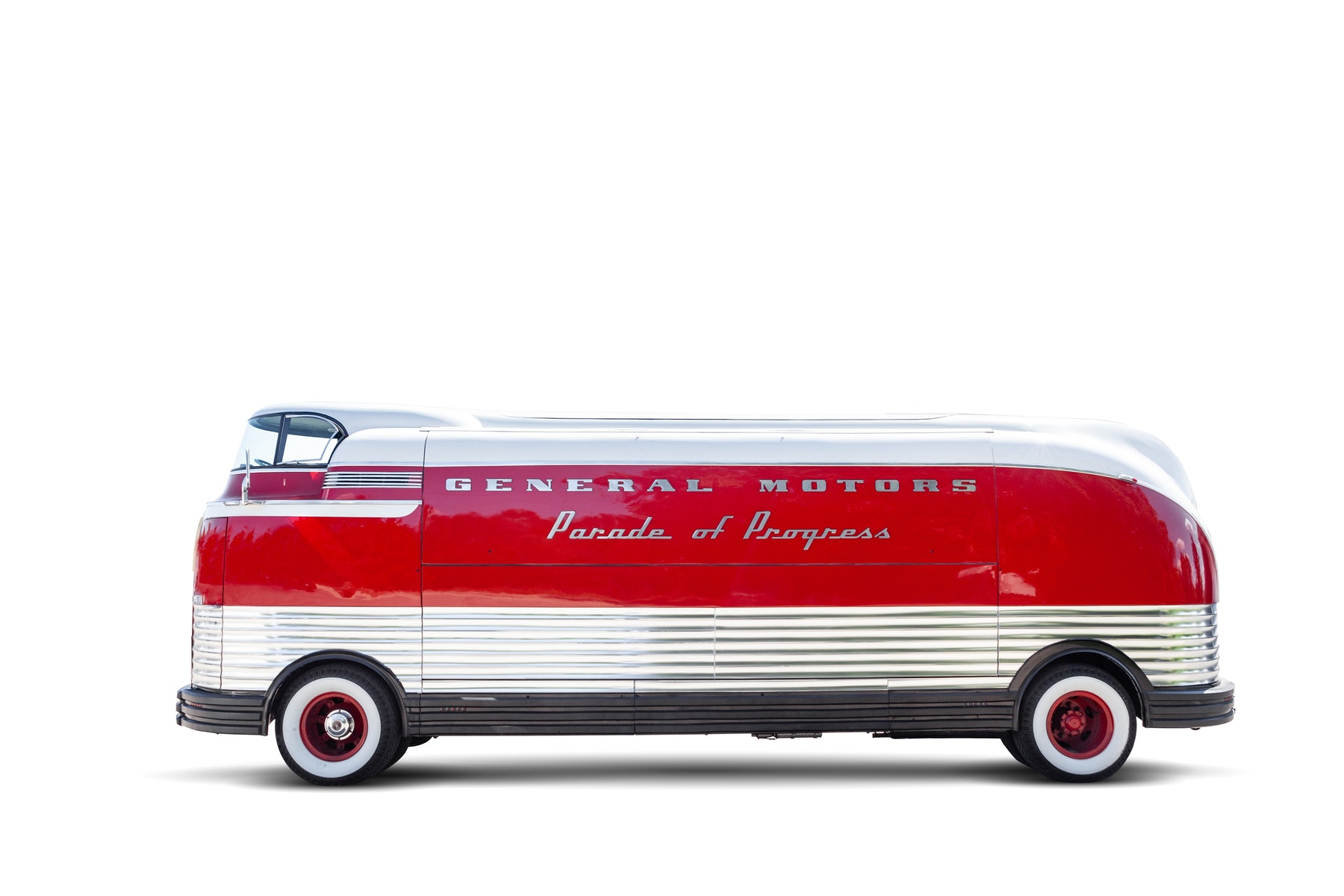
GM launched the Parade of Progress in 1936 to promote the scientific and technological achievements of America as part of a traveling educational show. The Parade of Progress featured three distinct “tours” from 1936 to 1956. This is one of twelve Futurliners created in 1940 for the second tour of the Parade of Progress. All Futurliners served as transport trucks and display stages for the exhibits.
1954 Mercedes-Benz 300SL
Brain child of Max Hoffman, notoriously aggravating but savvy, distributor of Mercedes-Benz automobiles in the 1950s, the very expensive 160 mph 300SL offered a road-going sports car based on the Mercedes-Benz W194 race car. It achieved its goal of targeting the U.S. market with over 80% of Gullwing production was sold in America. Clearly Max got this one right. Today it remains one of the most desirable classic cars in the world
1940 Ford Pilot Model “Jeep”

In 1937, with clouds of war forming, the US Army invited bids on designing a quarter-ton lightweight utility vehicle. Manufacturers were invited to submit prototypes to meet the Army’s specifications. Ford, American Bantam, and Willys-Overland were left standing for the final cut and were charged with producing more prototypes for further evaluation.
Willys-Overland would actually win the Army contract but, due to the needs for a lot of jeeps to be produced quickly, Ford with its superior production capabilities was awarded the contract to produce the Willys-Overland design. The critical role played by the rugged jeep in WWII is now legend.
1909 White Model M Steam Car
As 27th President of the United States, William Taft possessed a great interest in automobiles. He converted some White House stables into a four-car garage which held an electric vehicle, two Pierce-Arrows and this White Model “M” Steamer. Recognized as the first Presidential Limousine, it is the only remaining car used by Taft.
1962 Willys CJ-6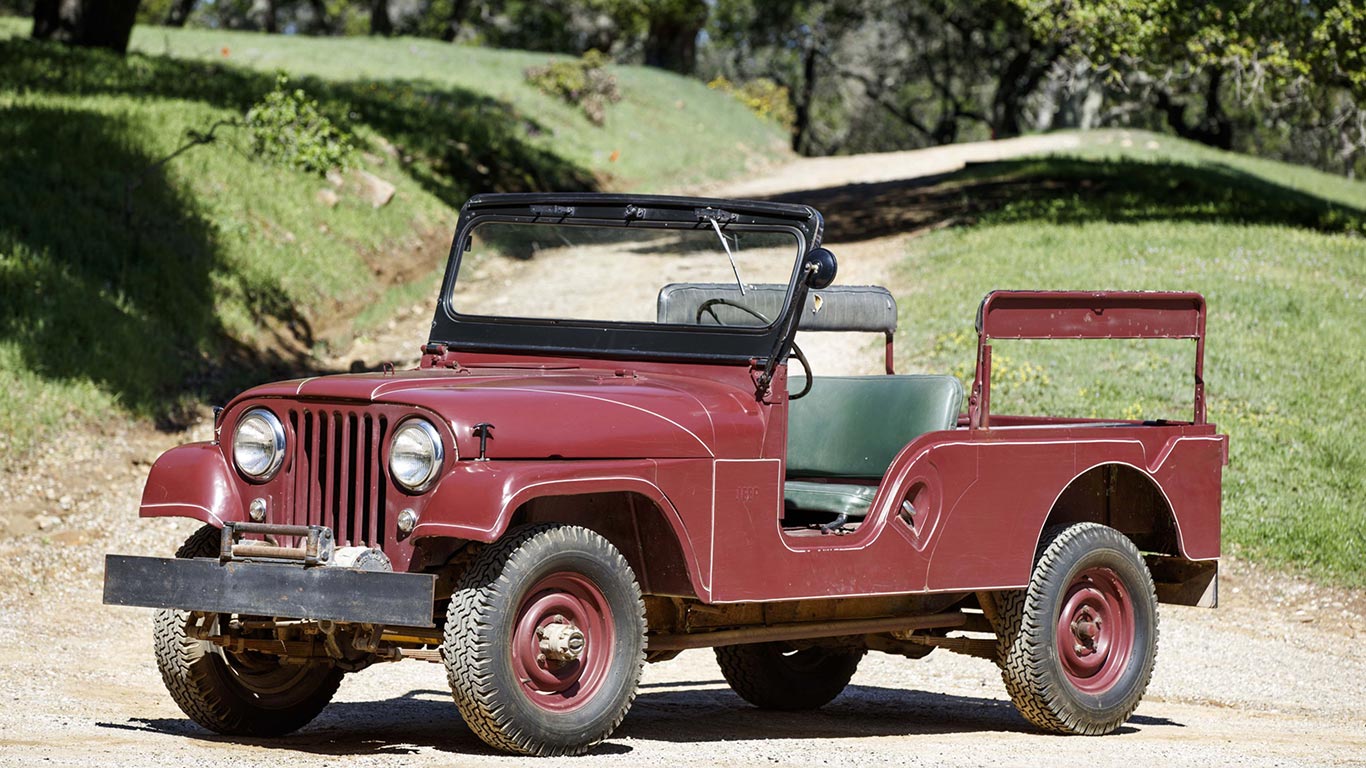
This 1962 CJ-6 was the personal vehicle of Ronald Reagan, 40th President of the United States. He favored its use at his 688-acre ranch near Santa Barbara, California. While not a favorite of Nancy’s, Ron loved using the scruffy red jeep for heavy duty ranch work. Due to Reagan’s declining health the CJ-6 was sold to the Young America’s Foundation in 1995.
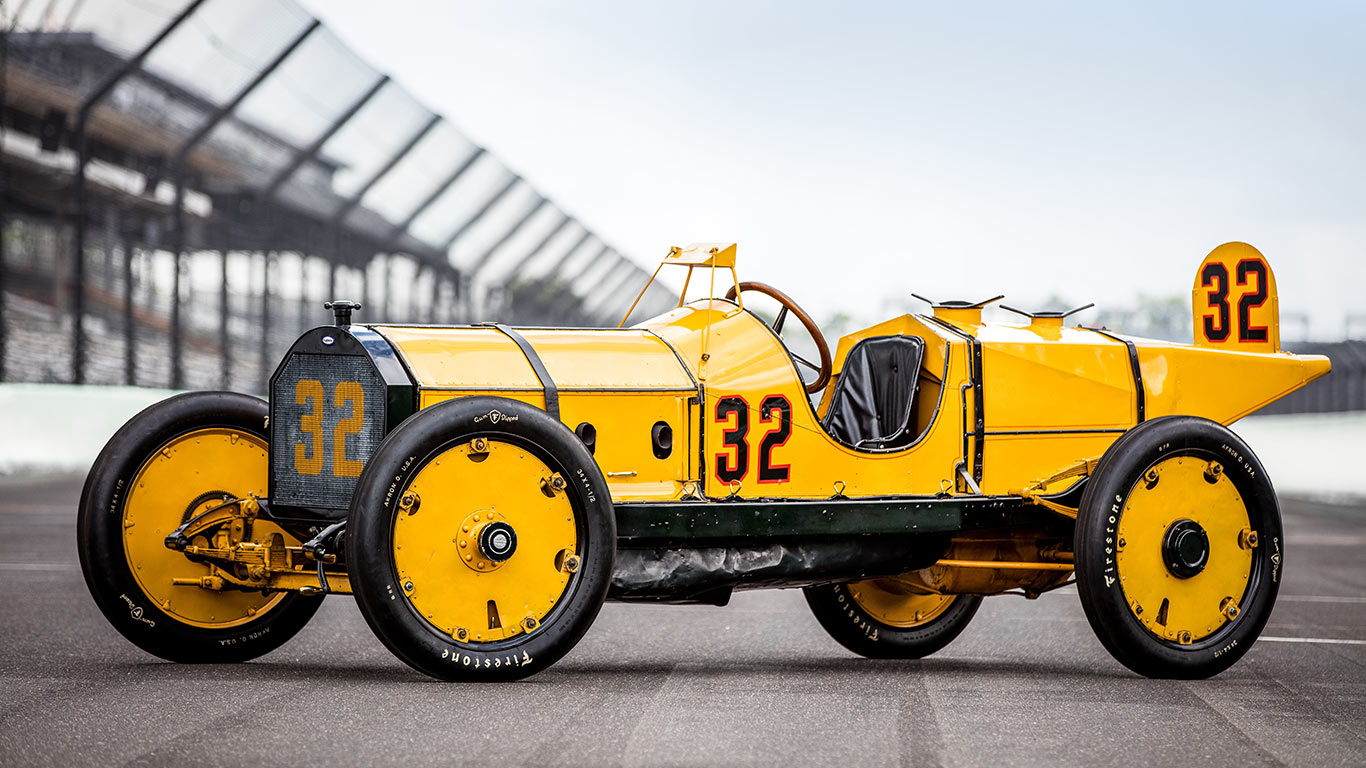
1911 Marmon Wasp
Winner of the first Indianapolis 500 in 1911, the Marmon Wasp driven by Ray Harroun averaged a speed of 74 mph with the whole race taking about 6 hours and 42 minutes. Aside from winning the first running of a great historic race it also features the first documented use of a rear-view mirror on a race car.
1907 Thomas Flyer 4-60
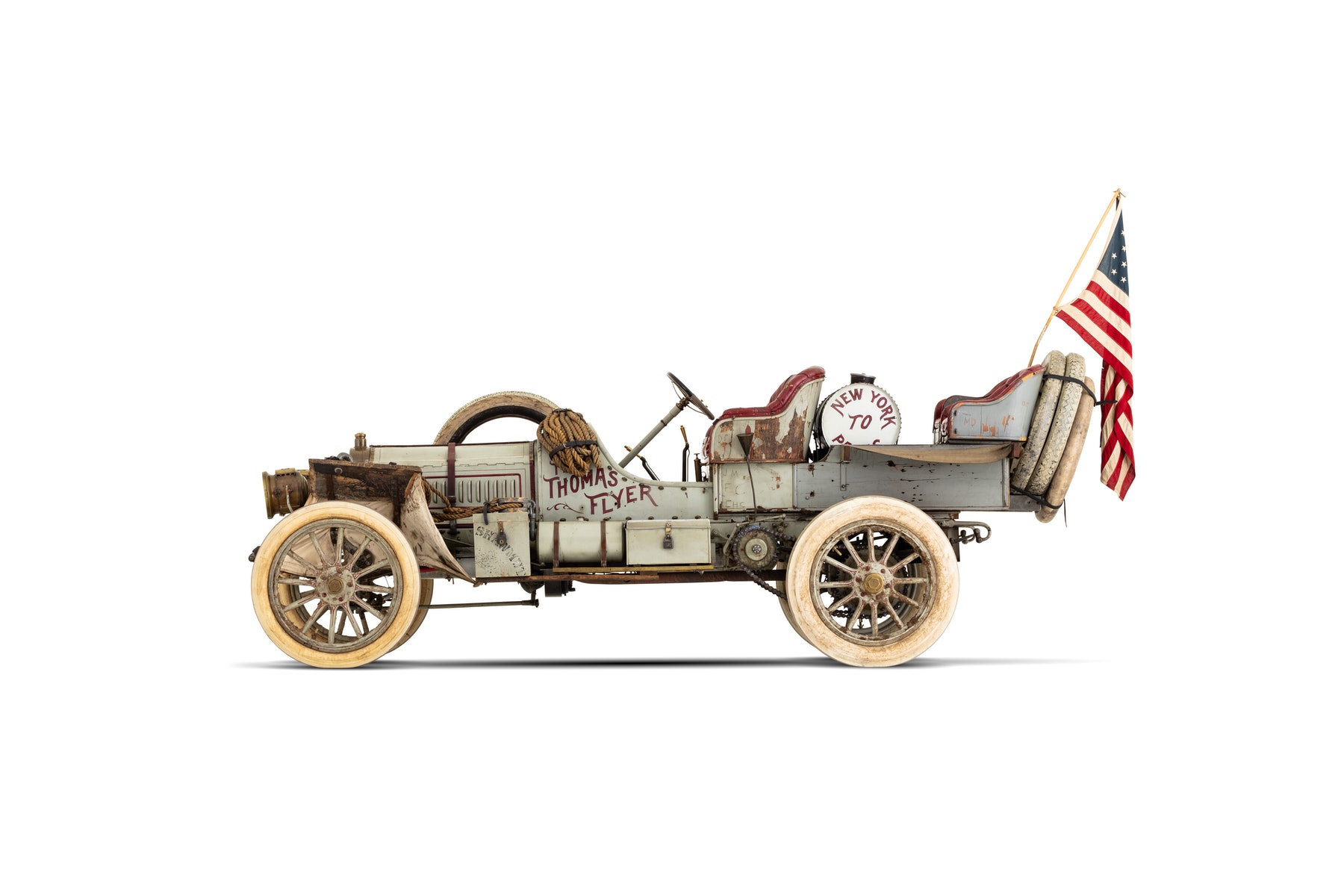 This Thomas Flyer won the 1908 New York to Paris Automobile Race. In traveling over 22,000 miles in 169 days, it is one of only three of the six competitors that completed the competition and was the only American car entered. Its margin of victory over the second place finisher was 26 days. The victory drew great attention to the early American automobile industry and world-wide recognition to America.
This Thomas Flyer won the 1908 New York to Paris Automobile Race. In traveling over 22,000 miles in 169 days, it is one of only three of the six competitors that completed the competition and was the only American car entered. Its margin of victory over the second place finisher was 26 days. The victory drew great attention to the early American automobile industry and world-wide recognition to America.
1920 Anderson Convertible Roadster
In the age of Detroit dominance in automobile manufacturing, Anderson stood out as a manufacturers based in the South. Between 1916 and 1925 Anderson produced over 5,000 cars in Rock Hill, South Carolina with the aim of attracting local buyers.
With few examples of Anderson products existing today, this is believed to be the sole surviving example of the Convertible Roadster design. It’s patented design which allowed it to switch between two or five-seater configurations, along with its rarity, made it a prime candidate for register inclusion.
1938 Buick Y-Job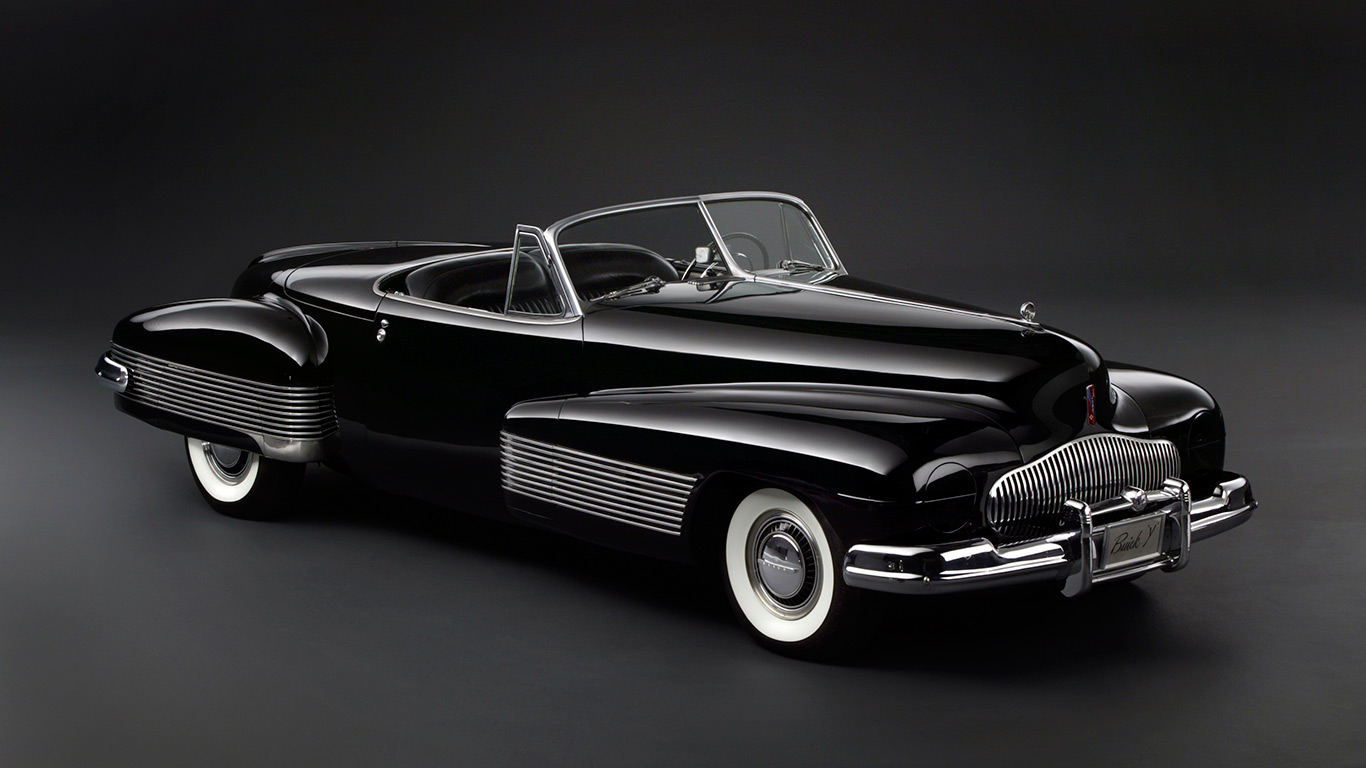
Until the Buick Y-Job, auto shows never featured concept cars. The Buick Y-Job was the first. Styled by the famous GM head of design Harley Earl, the Y-Job sought to create a design language for future Buicks.
Possessing power-operated hidden headlights, electric windows, and wrap around bumpers the Y-Job bristled with features, concepts and executions that would inspire automobile designers for years. It also paved the way for the legion of concept cars to come. A fully functional vehicle, it would be driven by Earl for many years.
1967 Chevrolet Camaro
In responding to the dynamic success of the Ford Mustang, Chevrolet worked quietly on a response that in itself would significantly impact the pony car market. Released in August of 1966, the Camaro began a storied and highly successful career. After being left to deteriorate, this Camaro was identified as the very first model to be produced and subsequently enjoyed a total restoration returned it to its original condition.
1932 Ford Model V8
A landmark execution of that established the benchmark for the hot rod as a stripped down V8-powered Ford roadster. The creation of Bob McGee who upon returning from serving in WWII returned to his first love, hot rodding. This definitive example of a trend setting concept took a 1932 Ford roadster and transformed it by cutting and shaving the bodywork, lowering the suspension, upgrading the engine, installing custom upholstery and treating it to a custom red paint job.
1951 Mercury 
Masato Hirohata returned from the U.S. Navy in 1952 and let Barris Kustoms of Los Angeles loose to pursue their passion in what he wanted to be the world’s wildest custom Mercury Coupe. Chopped and dropped to the ground with extraordinary and meticulously executed design details and outrageous paint this coupe continues to wow people 70 years later. The Hirohata Merc won ‘best in class’ for custom Mercurys at the 2015 Pebble Beach Concours d’Elegance.
1964 Chevrolet Impala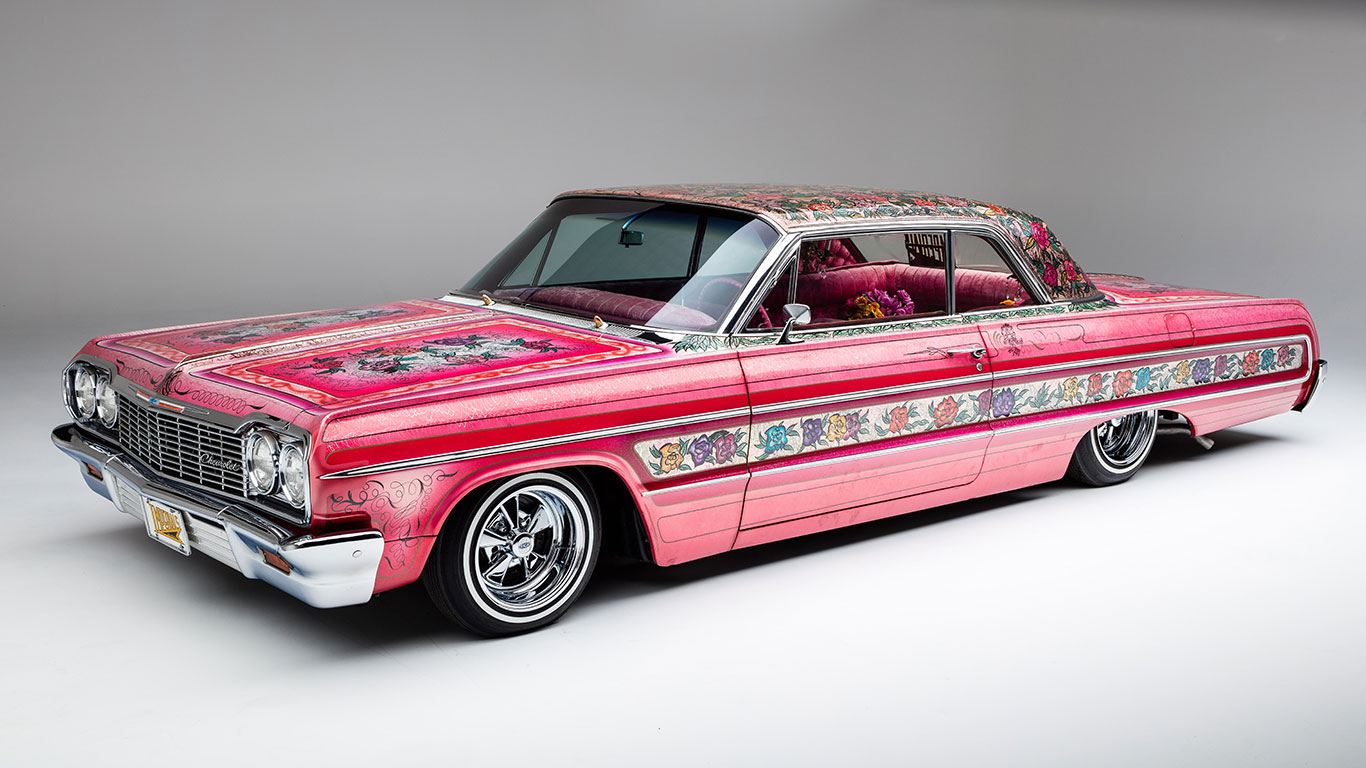
Capturing the creative vision of the late Jesse Valadez this 1964 Impala stands as the gold standard for the low rider community that originated in Los Angeles in the early 1970s. This example is the third of three cars built by Valadez and named Gypsy Rose. Over 20 gallons of clear lacquer cover the candy red and pink paintwork. Hundreds of rose details create a unique exterior. A crushed velvet interior, complete with cocktail bar and chandelier round out this one of a kind featured on just about every custom car magazine of its time.
1933 Graham 8 Sedan “Blue Streak”
A significantly transformative design, the Graham Blue Streak ,released in 1932, incorporated streamlined styling featuring a laid-back grille, innovative chassis design, body-colored headlights, wrap around “skirted” fenders, pearlescent paint and a totally concealed frame. So obviously appealing, these design features were quickly adopted by other manufacturers. By 1933 Graham advertised the “Blue Streak” as the most imitated car on the road.
1896 Benton Harbor Motor Carriage
The Benton Harbor is significant as one of the oldest intact automobiles built in the United States. The Benton Harbor Motor Carriage or “motocycle” was designed and built by Albert and Lewis Baushke of Benton Harbor, MI, owners of Baushke Carriage Works, and William O. Worth, an engine builder and inventor from Chicago, IL.
1968 Ford Mustang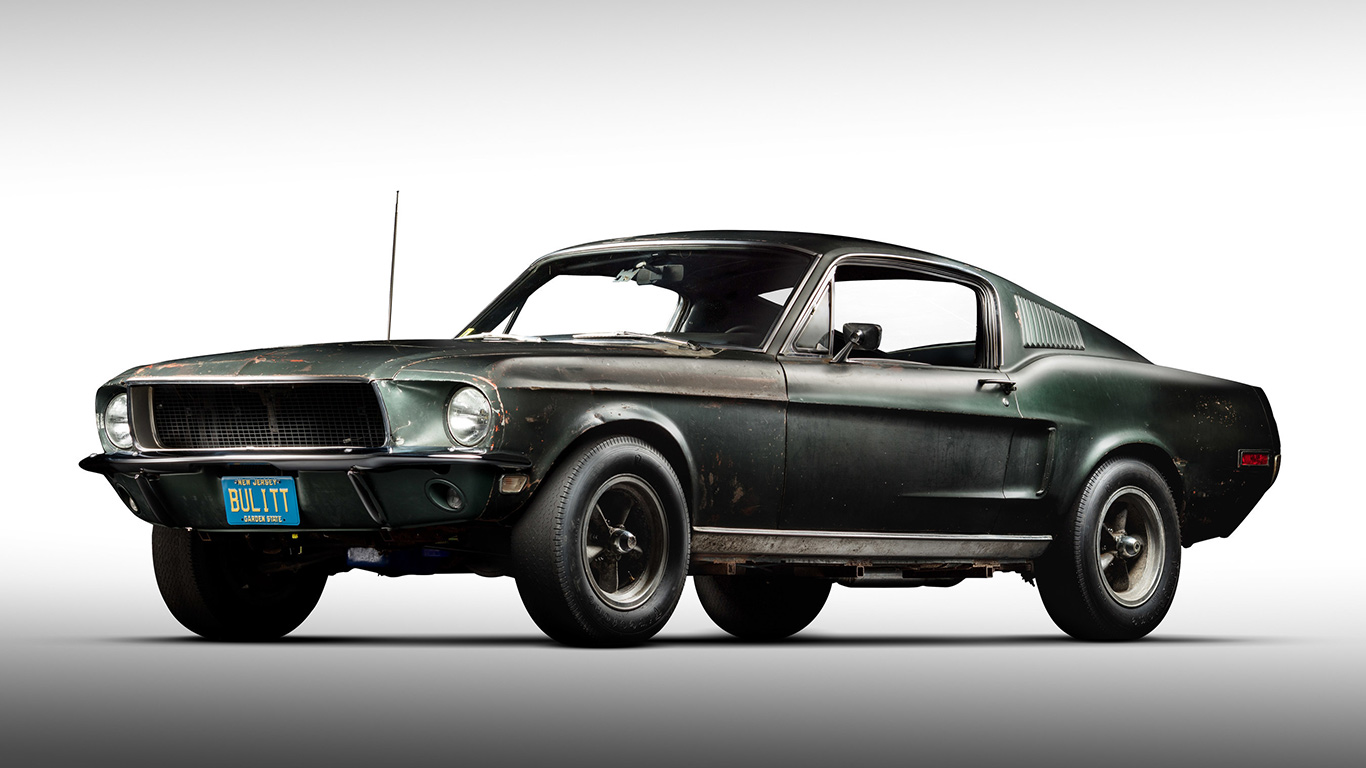
The long lost 1968 Mustang fastback driven by Steve McQueen in the movie Bullitt. What more needs to be said?
1985 Modena Spyder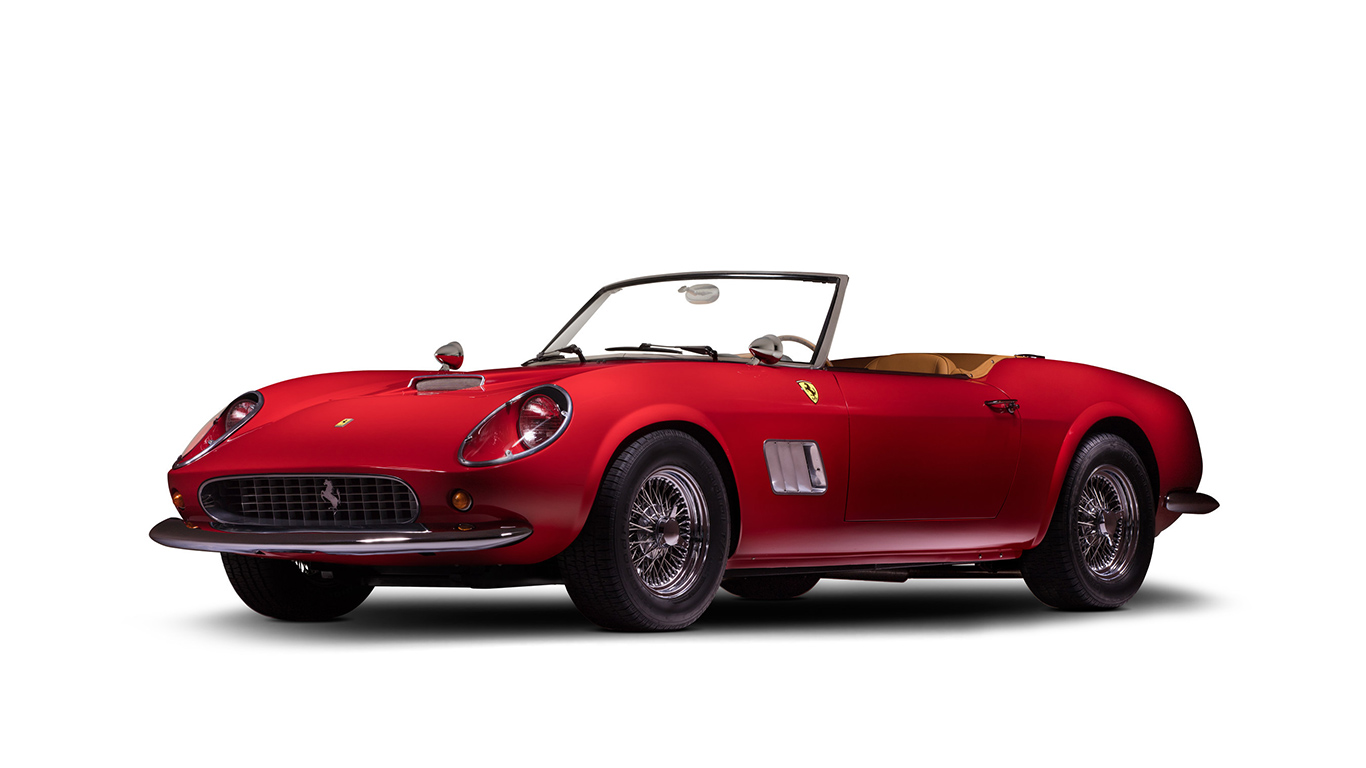
This Ferrari 250 GT California replica was made famous for its starring role in the 1986 film “ Ferris Bueler’s Day Off.” Like the Bullitt Mustang, what more needs to be said?
1927 Ford Model T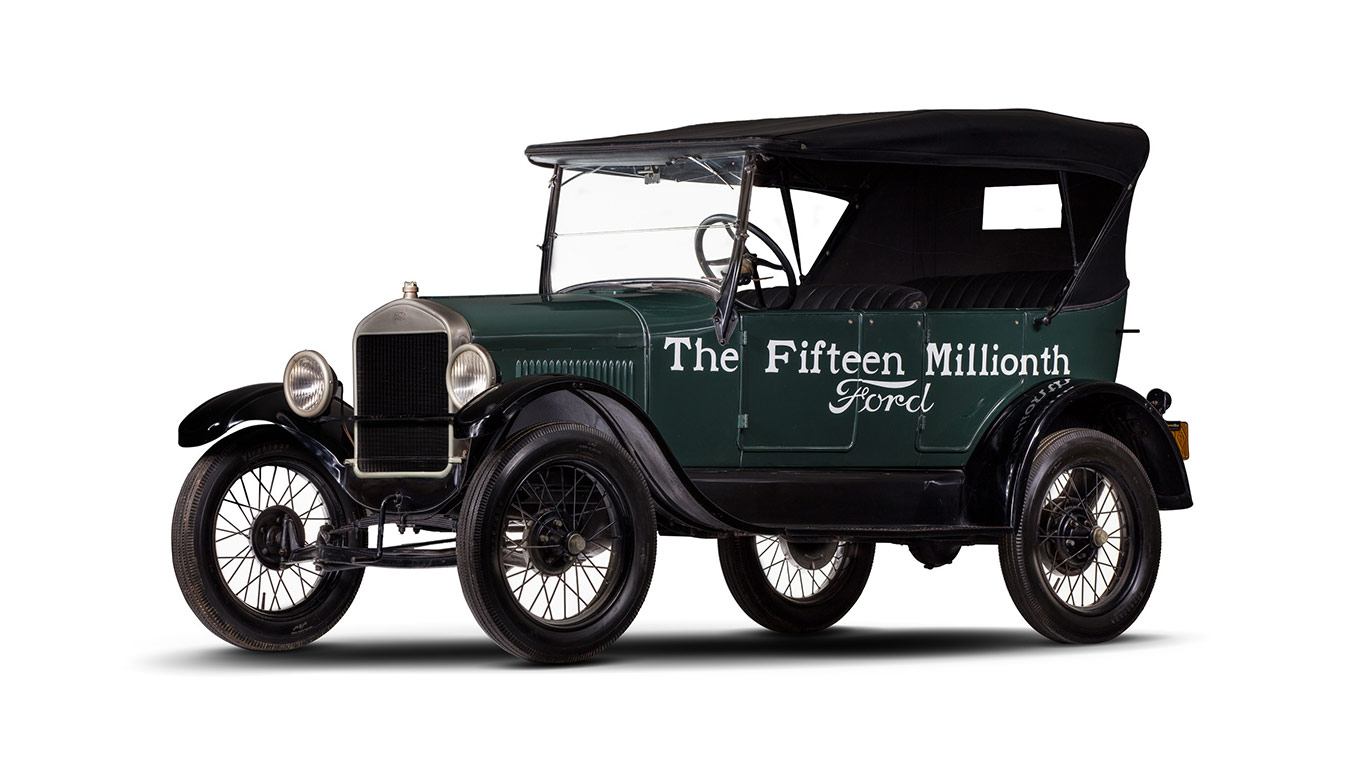
This is the fifteen-millionth and final Ford Model T to be produced, this car rolled off the revolutionary assembly line driven by Henry Ford himself in 1927.
1984 Plymouth Voyager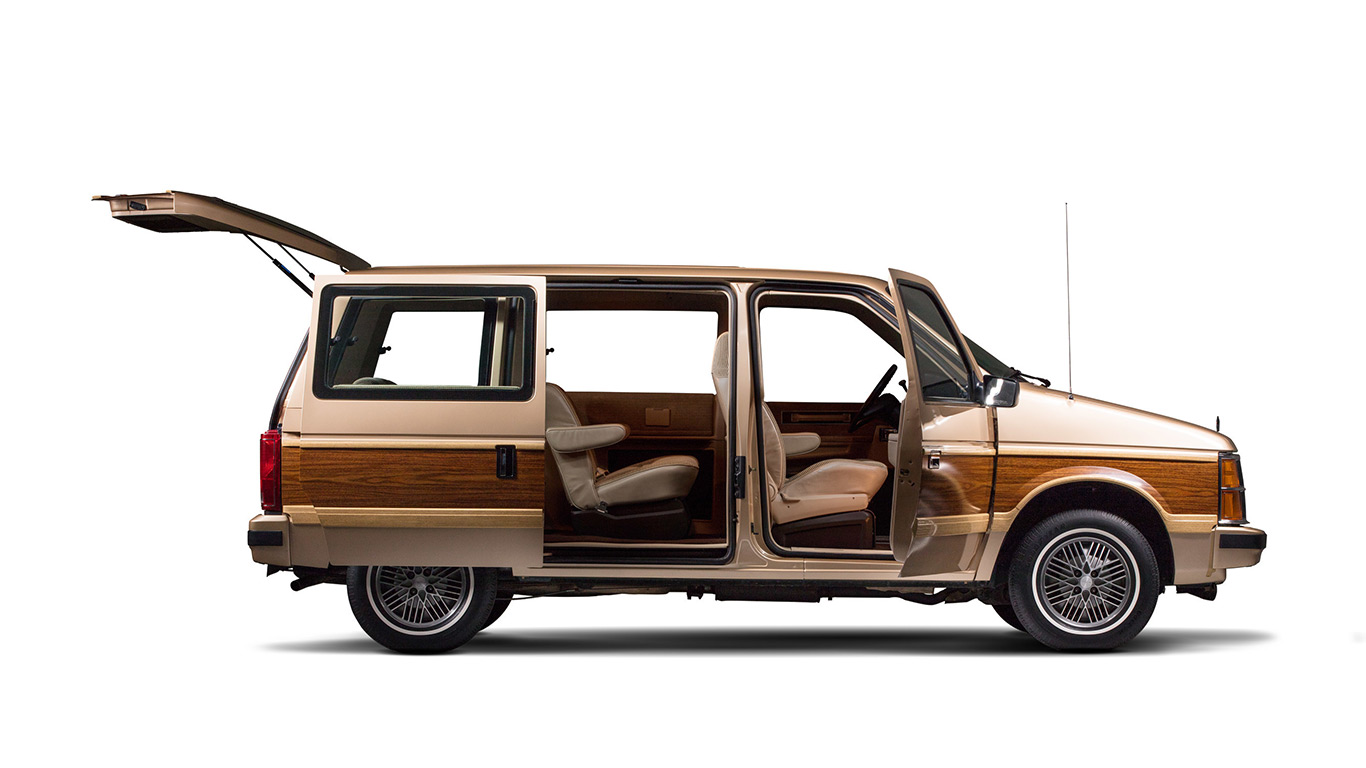
As the first car-derived minivan the Plymouth Voyager and its sister Dodge Caravan literally created a new class of automobile that transformed consumer tastes and the car business. American families no longer had to rely on giant station wagons for transport.
This particular Plymouth Voyager was the first to roll off the assembly line and was kept in its original condition by Chrysler Corporation.
1969 Chevrolet Corvette
In 1961, General Motors piggybacking on the popularity of astronauts worked with Jim Rathmann Chevrolet on a leasing program for the astronauts – lease a Chevrolet of any type (including Corvettes) for $1/year. Most astronauts preferred the Corvette.
By 1969 the third group of astronauts now with the Apollo program were landing on the moon. In 1968 the trio for Apollo 12 astronauts Alan Bean, Pete Conrad and Dick Gordon leased a matching trio of 1969 Corvette Coupes. Each was Riverside gold with custom black “wings.” By appearing on the cover of Life magazine, these became the most famous of the “astronaut” Corvettes.
1966 Volkswagen Transporter
This VW Transporter was the property of civil rights pioneer Esau Jenkins and his wife Janie B. Jenkins in Charleston, South Carolina. Successful business owners and parents of 13 children, the Jenkins became leaders in their community. Throughout their lives, they strove to better the economic, cultural, and political situation of African Americans on Johns Island and the surrounding area.
In approximately 1967, Esau purchased this used 1966 Volkswagen microbus. It was utilized by the Jenkins as their primary means of transportation and to support their various initiatives where it became a fixture in the Charleston area.
1921 Duesenberg Straight Eight
Up until 1919 the Duesenberg brothers focused on engineering excellence and racing. At that point they decided to expand into production of passenger cars. In 1919 Samuel Northup Castle placed an order for a Duesenberg Straight Eight and, thus, was destined to become the first owner of a Duesenberg passenger car when he took delivery of his Straight Eight in 1921. Technically advance far beyond its competitors, this is the first Duesenberg passenger car.
1970 Dodge Challenger
In 1969, 27-year-old, combat veteran, Purple Heart recipient and Detroit Police Officer, Godfrey Qualls special ordered this 1970 Hemi Challenger. Qualls pretty much checked all the options boxes and Special Edition (SE) packages including a 426 HEMI engine, “Super Track Pak” with four-speed manual transmission, shifted via a floor mounted Hurst pistol grip sending power to a Sure-Grip Dana 60 with 4.10 gears. Known as the “Black Ghost” because he would seemingly vanish for months after making a few runs on Woodward, Telegraph or Stecker St., Qualls was rarely bested in his street racing days.
1981 DeLorean DMC-12
Doc Brown’s time machine in the 1985 hit film “Back to the Future.” Again what more needs to be said?
1979 Lamborghini Countach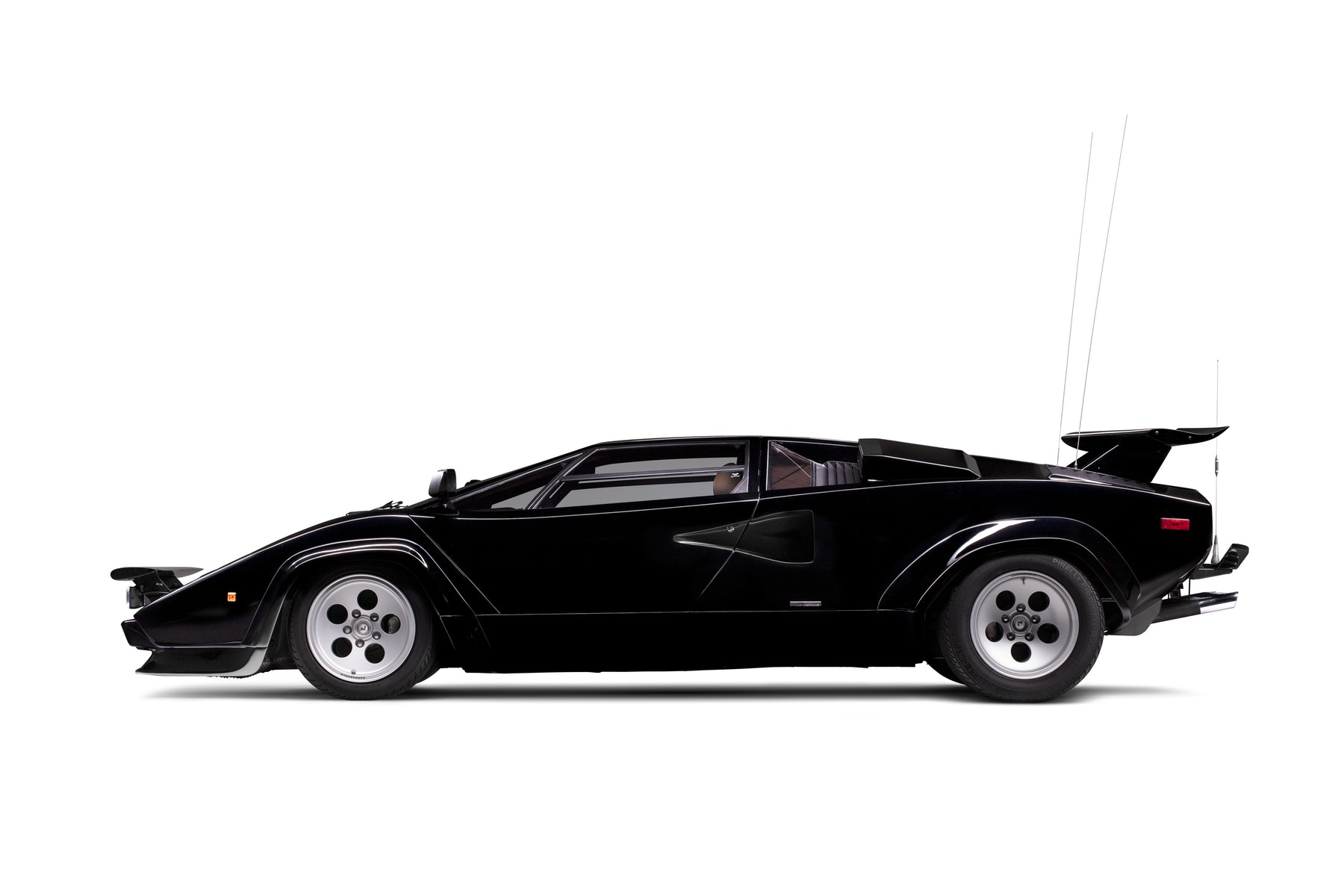
Poster art for just about every kid of that period, this 1979 Lamborghini Countach LP400 S, represents generations of car enthusiasts’ passion for speed and the open road. Introduced in 1971, the radical mid-engined exotic Countach fired the starting gun for the race to produce the ultimate super car just when, counter intuitively, economy and practicality were coming into vogue.
This particular Countach gained fame in the 1981 film “The Cannonball Run.”
1963 Chrysler Turbine Car
The Chrysler Turbine Car featured a turbine jet engine housed in a Ghia body and was the latest iteration in Chrysler’s decades-long attempt to bring a turbine-powered car to the market. Fifty of the 55 original cars wearing identical metallic bronze paint, black vinyl roof, and bronze interior—were distributed to households in the U.S. as part of a consumer research project. The results were promising, but the cost to mass produce the vehicles was not.
1952 Hudson Hornet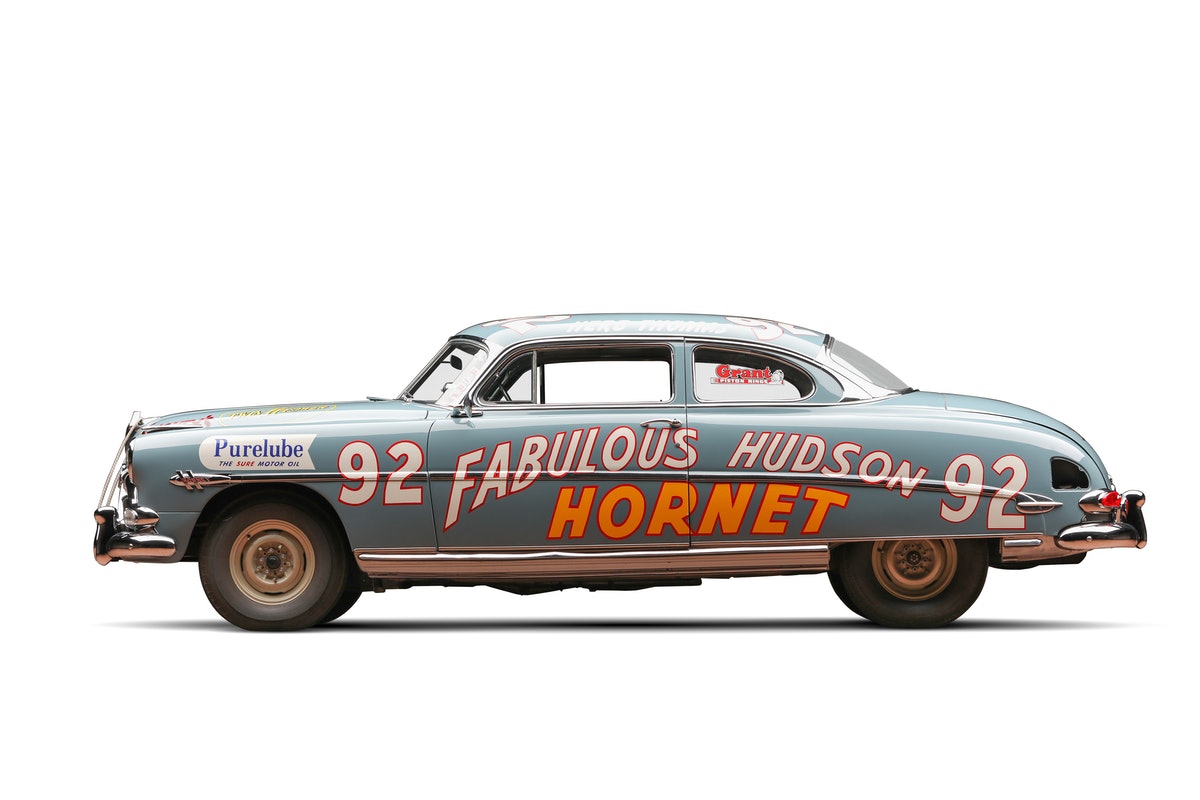
From 1951–55, Hudson dominated stock-car racing just as the sport was beginning to take off. This one, prepared by legendary mechanic Smokey Yunick went to the track in the 1952 season. This Hudson is the only NASCAR-raced Hornet known to exist.
If asked my opinion for vehicles worthy of inclusion in the NHVR my two additions would be:
1949 – 1954 Jaguar XK120
While the MG introduced sports cars to service men, It was the sexy and fast Jaguar XK120 that offered a beautiful car for a date on Saturday and a performance car that could be driven to the track where it could win on Sunday, all in one. Its beauty appealed to those with money and its affordable was very attractive to those who wanted to race.
1966 Volvo P1800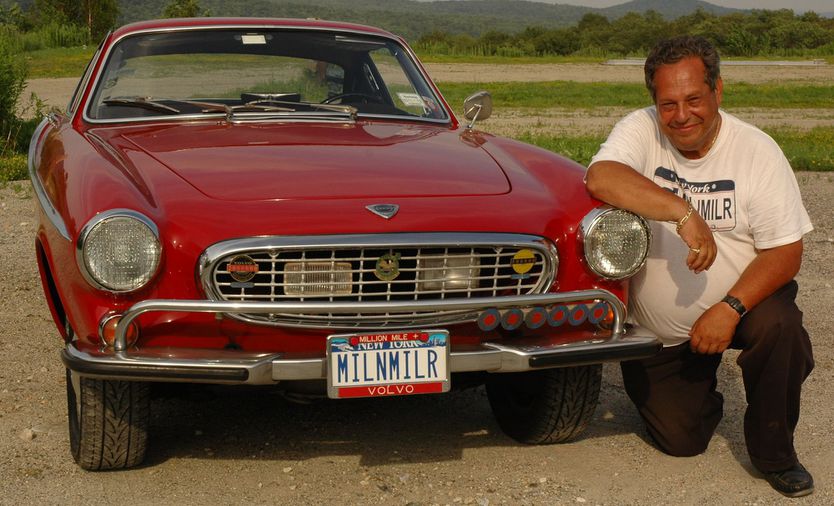
Irv Gordon’s 1966 Volvo P1800 that the Long Island School Teacher bought new covered well over an honest 3,000,000 miles with Irv at the wheel during a period of 52 years till he passed away in 2018. Irv and his P1800 was an advertising God send for Volvo and its story of Volvo durability was known around the world.

If the model is The National Register Of Historic Places In America , then the vehicle selected should follow that premise, limited to those designed and manufactured in AMERICA !
The NHVR does not limit eligibility to vehicles made in America. Thank you for your comment
Really? I would question some of these choices as worthy of this supposed high honor.
I believe others may feel the same as well. I appreciate your comment.
Thanks for Another great article, Burton. Nice shot of Irv too.
Thank you for the kind words. Greatly appreciate the feedback.